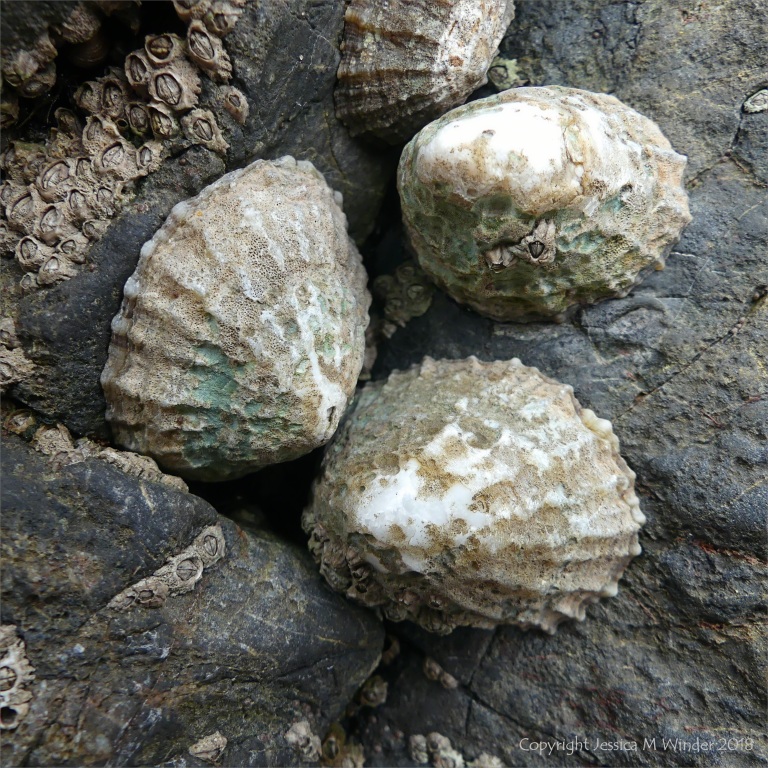Limpets and barnacles with shells pitted by infesting lichen, on Carboniferous Limestone at Caswell Bay in Gower, South Wales. The crustose lichen Collemopsidium foveolatum is the most likely candidate for the infestation as it is known to favour the shells of barnacles and limpets in the eulittoral zone – at or above the high water mark on the shore.
- Comment
-
Subscribe
Subscribed
Already have a WordPress.com account? Log in now.


Interesting information; very nice photograph. What accounts for the light turquoise color? Is it the natural color of the limpet shell? Cyanobacteria?
LikeLiked by 1 person
I love the word “barnacle” – it has such a lovely rhythm to it.
LikeLiked by 1 person
I don’t know what causes the blue-green colour on the shell. I have often observed it. You could be right about cyanobacteria. It is a good idea. Another thought that crossed my mind was something to do with copper in the water. Copper corrodes to that colour and the wider area is famous for its copper (mining, smelting, and export). Nearby Swansea was known as Copperopolis in the past. On balance though, I think your idea is best. I will look into it. Thank you.
LikeLike
Yes, you are right, Emma. I think Dylan Thomas liked the sound of the word too. In Under Milk Wood his description of Myfanwy Price’s dream lover uses “thunderbolt-bass’d and barnacle breasted”. And Captain Cat says “through thick and thin how they grip us, the barnacle dead!”
LikeLiked by 1 person
Oh lovely!
LikeLiked by 1 person
I looked it up, Linda. Microbial bio-erosion of shells by cyanobacteria is the subject of current research in many mollusc species, including limpets (although a different species to the one shown in my photograph). See, for example, https://www.researchgate.net/publication/277172556_Life-history_trait_of_the_Mediterranean_keystone_species_Patella_rustica_Growth_and_microbial_bioerosion.
LikeLiked by 1 person
Thanks for finding this, Jessica. Now I’ll keep my eye out for that color on shells I find in Florida. BTW, I, too, was wondering about copper as the source of the color. I had no idea about the area being famous for its copper, or I would have wondered harder.
LikeLiked by 1 person